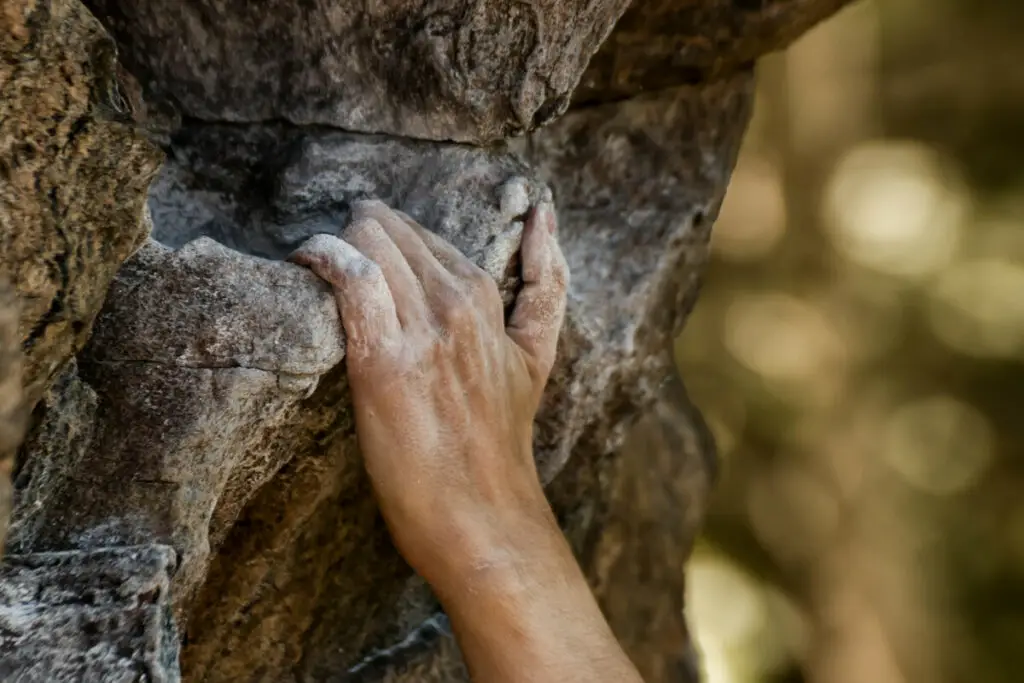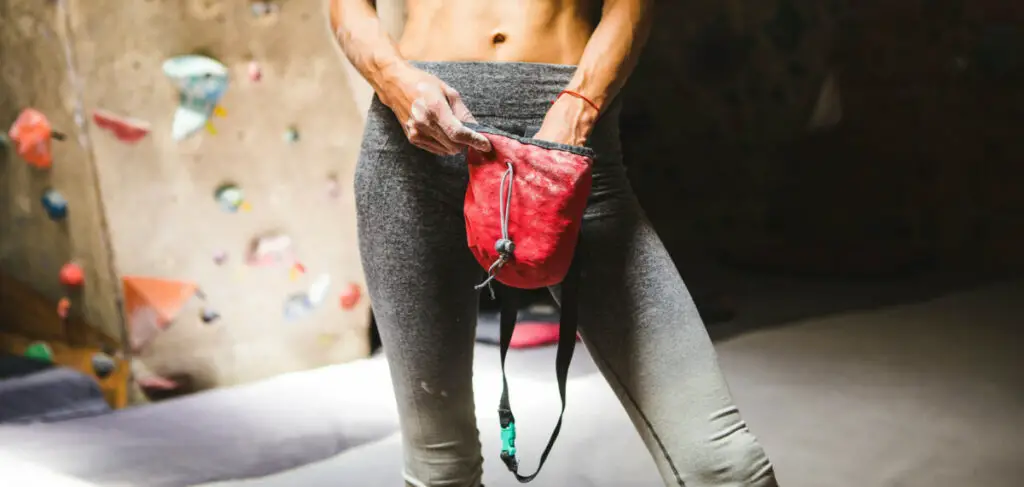
With most climbing gear being on the more expensive side, you may be thinking it will be the same for chalk. However, chalk is usually pretty moderately priced- depending on who you buy it from.
The price of rock climbing chalk varies from $9 to $35, with most brands charging $10 to $15. The three main kinds of chalk are liquid chalk, loose chalk, and chalk balls. On average, liquid chalk costs $15-$20 per bottle, loose chalk costs $12-$20 per 100-300 grams, and chalk balls cost $5-$10.
As we dive deeper into these prices, you will learn more about the different types of chalk which will help you understand which one is best for your needs and budget.
Uses for Climbing Chalk
The main purpose of rock climbing chalk is to dry sweat and increase the friction between the climber’s hands and the rock. This helps climbers have an easier time gripping holds, even if it is later in the day and their hands have started to sweat. Most climbers bring chalk with them on routes by putting it in a chalk bag that connects to their harness or waist.
Most kinds of athletic chalk, such as those used by climbers, gymnasts and weight lifters are made out of the same ingredient- magnesium carbonate. This means that although they are often marketed to different groups, you can use them interchangeably without any huge difference in performance. The only difference is that some climbing companies add other ingredients such as Upsalite so that the chalk absorbs even more moisture.

Different Types of Chalk
Liquid Chalk
Liquid chalk is a mixture of rubbing alcohol and normal climbing chalk that creates a lotion-like liquid. Since it is in this liquid form, it creates less of a mess than loose chalk but isn’t super practical to use mid-climb, as you need to use two hands to apply it. Liquid chalk takes some getting used to, so it is generally not recommended for beginners.
Liquid chalk costs more than loose chalk with producers charging on average $15 to $20 for each small bottle. It is more commonly used by weightlifters or those who climb in gyms where loose chalk is banned because of the mess it makes.
Loose Chalk
Loose chalk is just what it sounds like—ground-up chalk that is kept in a bag or bucket. There are different textures of chalk, from chunky to fine depending on your preference. Loose chalk tends to create quite a mess, to the point where some climbing gyms have even prohibited it.
Loose chalk also has the greatest price range due to the various additives that brands add. The brand Black Diamond adds Upsalite to their chalk to give it better liquid absorption. They charge just under $15 for a 300-gram bag. Other brands such as Joshua Tree add essential oils to their chalk which costs about $12 for a 100-gram bag.
The texture of chalk also affects the price. Chunky chalk takes less effort to produce, which means it is generally less expensive than fine chalk. The brand Mammut has chunky chalk for sale for just under $15 for a 300-gram bag, while their fine chalk is listed for just under $20.

Chalk Balls
Chalk balls are the happy medium between liquid chalk and loose chalk. Chalk balls (also known as chalk socks) are small, refillable fabric bags. The fabric is porous, allowing you to get more chalk by gently squeezing the ball or rubbing it in between your hands. Because the loose chalk is contained in the ball, it doesn’t make a big mess in the gym and leads to less waste.
Refillable chalk balls are cheaper from the get-go, costing about $5 to $10, but you will need to buy loose fine chalk when you run out in order to keep using your chalk ball.
How to Use chalk
You may feel the need to use chalk when your hands have become sweaty or there is a hold you just cannot seem to get a good grip on. The application of chalk depends on the kind you use. For liquid chalk, you just squeeze a bit into your hands and rub it around like lotion. Loose chalk is usually stored in a chalk bag, so you just reach your hands in and coat them. To apply chalk from a chalk ball, reach into your chalk bag and squeeze or rub the ball in your hand.
You should really only ever apply chalk to your hands. If applied to climbing shoes, chalk makes them slippery instead of giving them a better grip. Chalk also acts like dirt, putting unnecessary wear on a climbing rope.

Sometimes, the problem isn’t that you don’t have enough chalk, but that there’s too much on both the hold and your hand, which creates less friction and makes it harder to grip the rock. To fix this problem, you can use a brush to remove the excess chalk. It is also good climbing etiquette to remove chalk from holds on an outdoor route. This leaves the rockface looking natural so others can enjoy it too.
One thing to remember about chalk is that it is meant to dry out your skin. That means that when you’re done climbing, you should wash your hands and, if you feel it necessary, apply lotion to prevent your hands from dryness and cracking.
Is Chalk Safe to Use?
Some wonder about the safety of using chalk, not only on your lungs but the environment too. Chalk is non-toxic with very few if any injuries or sicknesses linked to its use. However, just like any dirt or dust, it can cause coughing and sneezing if used in confined spaces.
The chalk itself isn’t harmful to the environment, however, the production of climbing chalk can negatively affect the environment. Oftentimes, a layer of dust forms during the process of mining magnesium carbonate which can cause respiratory issues in residents and harm the local environment. This is often avoided by the use of modern technology and filters.

